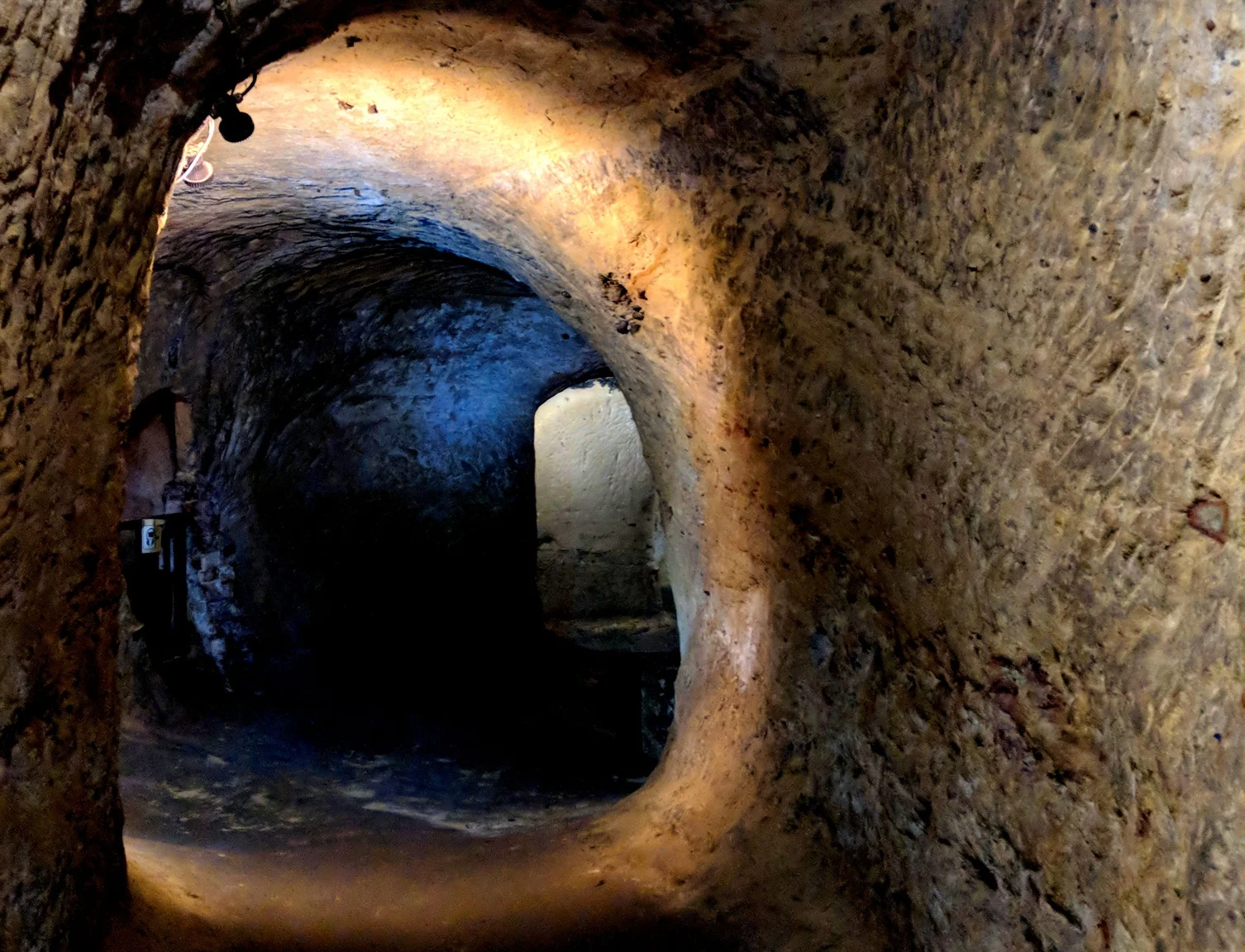Nottingham, nestled in England’s East Midlands, is famously known as the legendary home of Robin Hood. But beyond its folklore, the city also boasts the UK’s largest network of caves, carved by hand into the soft sandstone bedrock as early as the 9th century AD.
The caves were first mentioned by Asser, a Welsh monk from St David’s, Dyfed, who describes them as “Tig Guocobauc” in Old Brythonic (meaning “place of caves”) in his The Life of King Alfred (AD 893).
As Nottingham expanded, numerous cave entrances were sealed or buried— a process accelerated by the St. Mary’s Nottingham Inclosure Act of 1845, which prohibited renting out cellars and caves as housing for the poor.
When Nottingham City Council began formally documenting its cave network in 2009, just 425 were known. Since then, extensive research and exploration has been conducted by Scott Lomax, the city archaeologist at Nottingham City Council, almost doubling the number of documented caves.
“Through research and archaeological investigations, more caves have been found than expected—including some thought to have been destroyed by 20th-century development. With continued work, I am confident we will eventually surpass 1,000 recorded caves,” said Scott Lomax.
“It is essential that we know where Nottingham’s caves are so they can be protected during development and, where possible, made accessible and brought back into use. These caves are an important part of our city’s history, and by identifying them, we can ensure they are preserved and appreciated rather than lost or damaged.”
The most recent cave discovery was made during roadworks on the former site of the distributor for Bass, Ratcliffe and Gretton Brewery of Burton-on-Trent. The cave is 17 metres in length by 4 metres wide, which was accessed by a circular shaft.
“These latest discoveries further cement Nottingham’s reputation as Europe’s most cave-rich city, with its unique underground spaces offering insights into life from the medieval period onwards,” added Lomax.
Header Image Credit : Enchufla Con Clave – CC BY-SA 4.0
Sources : Nottingham City Council





